|
Posted by: Kim_Hamilton on 02/01/2009 11:14 PM
Updated by: Kim_Hamilton on 02/03/2009 09:12 AM
Expires: 01/01/2014 12:00 AM
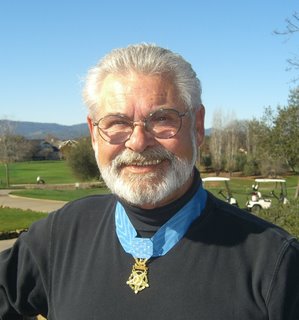
There are Medals and There are Medals.....Profile on Columbia Medal
of Honor Recipient, Jon Cavaiani~by Victor Claveau
In my opinion, the award winning movie, Saving Private Ryan was an
extraordinarily realistic portrayal of the ravages of war. Saving
Private Ryan was not simply a movie, a work of fiction set in a time of
tremendous international turmoil; it was a tour-de-force. The movie
showed most graphically the cost of war in maimed bodies and lost lives.
No one who goes into combat returns home the same person; each carries
physical and/or psychological scars for the rest of their lives. Taking
the life of another human being, no matter how justifiable, is a most
traumatic experience, resulting in a permanent searing of the memory.
Time may dull, but the memory can never be completely erased. ....
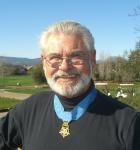
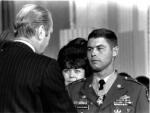
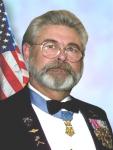
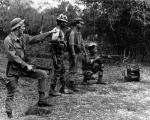
It was my distinct honor to meet with Sergeant Major Cavaiani at
Greenhorn Creek, in Angels Camp, California, where he is employed as a
golf marshal. He was standing by the fireplace when I approached and
saluted. He solemnly returned the salute and offered his hand.
[Note: It is a widely-believed myth that in the United States military
all personnel are required to initiate a salute to a Medal of Honor
recipient, regardless of rank. Nothing in United States military
regulations relates specifically to the Medal of Honor except for its
order of precedence on the uniform. Custom, however, does dictate that
it is customary for all ranks to render a salute to a recipient,
regardless of the recipient's rank.]
Sergeant Major Cavaiani and I spoke for about an hour and he briefly
recounted how he became a Medic in the Army’s elite Special Forces and
eventually found himself in Viet Nam.
In his own words, "My last assignment before being captured was as a
commander of a radio relay site in north-west Vietnam. Khe Sahn Airfield
was to the west, seven kilometers from Laos. North Vietnam border was 11
kilometers north, and Camp Fuller was 32 kilometers east-northeast. It
was the most northwest camp in South Vietnam.
"On June 4, 1971, the relay site was attacked by a reinforced regiment
of NVA regulars. We fought the enemy through the night. Finally, on the
morning of June 5th, I told my men that I would cover their withdrawal.
I was forced to escape and evade for 10 days, only to be captured
outside the wires at Camp Fuller. From that day forward, the enemy, in
their own way, gave me the will to survive, to resist their ideas and
their belief that what they were doing was right. This, in turn,
strengthened my conviction that I was right in being in Vietnam.
“As a prisoner I was to meet some of the most heroic men I have ever or
will ever hope to encounter. Men who never let their country or families
down. Well by God, regardless of what some people said about the war, we
did our jobs as men and kept the faith in our President and country.
“I thank God and my country for letting me come back to see my daughters
again. And I say, with great pride, God Bless America."
He spoke of his capture, and incarceration; first for a few days in “The
Zoo”, then of almost two years in “The Plantation”, and finally the
“Hanoi Hilton” where he was sent just prior to his release. These
prisons will be forever remembered as places where men were brutally
degraded and tortured mercilessly. He weighed 198 pounds when captured
and 92 when released. For more information about these POW camps in
North Vietnam go to: http://www.ojc.org/powforum/powcamps.htm. In
addition, there are numerous websites on the subject. We must never
forget the sacrifices of these men and the brutality they daily endured.
W hen Army officials asked Cavaiani what he wanted to do upon his
release as a POW, he told them that he wanted to go back into training
and remain in Special Forces. He put on the weight, got back into shape
and attended refresher courses, including High Altitude Low Opening
(HALO) parachute training. Eventually, he was assigned to the 1st
Special Forces Operational Detachment-Delta (1st SFOD-D) — commonly
known as Delta in the U.S. Army, and Delta Force by civilians. Delta
members are on call 24-7 to handle special missions; primarily
counterterrorism, counterinsurgency and national intervention
operations.
I asked if he had been called into action while in Delta, and he simply
said “Yes” and said no more about it. I knew enough not to pry.
For more on Delta go to: http://www.specialoperations.com/Army/Delta_Force/
Receiving the MOH is somewhat of a two-edged sword. Cavaiani was not
always welcomed in his future assignments because of his notoriety. Some
Commanding Officers would rather not have to put up with the inherent
publicity. Much of his time was spent in providing lectures about his
experiences, and he continues along this path today.
I was a bit hesitant to ask him to recount the circumstances that led to
his heroic actions, capture, and eventual return home, but some of what
I read about his on various Internet sites was contradictory and I
desired clarification. He suggested that I would find an accurate
account in SOG: The Secret Wars of America’s Commandos in Viet Nam by
Maj. John L. Plaster, USA (Ret.), Simon & Schuster, 1997, pp. 325- 330.
* (See endnote). The text of which follows:
In Vietnam’s entire northwest region, the last burr under the NVA’s
saddle was a CCN [Command and Control North] radio relay site, Outpost
Hickory, situated on a peak 2˝ miles north of Khe Sanh. The closest
friendlies were at Firebases Fuller and Carroll, 20 miles east of there.
Although ostensibly only a radio relay site, Hickory’s greatest utility
was as a secret NSA radio monitoring post, using state-of-the-art
automated equipment to intercept enemy radio traffic.
Just 29 yards wide and 73 yards long, Hickory was held by twenty-seven
U.S. and sixty-seven indigenous soldiers, including SOG [Studies and
Observations Group] men, sensor readers and a squad from L Company, 75th
Rangers. The site was commanded by CCN Staff Sergeant Jon Cavaiani, who,
despite being outranked by several Americans, led the Montagnard**
security platoon, assisted by Sergeant John Jones.
That Hickory was threatened came as no surprise. For weeks Saigon
analysts electronically tracked units closing in on the little base so
closely that Lieutenant Colonel Mike Radke finally announced an assault
was imminent. “I said seventy-two hours and it was hit within
twenty-four,” he recalled. Due to it valuable radio intercept role, SOG
planned to hold Hickory until it became untenable.
At dawn on 4 June a security man pointed to something odd in Hickory’s
concertina wire. Looking closely, Cavaiani realized it was a Chinese
claymore mine and noticed ten more all along the perimeter, planted the
previous night during a blinding downpour. Cavaiani grabbed an M-60
machine gun and began knocking down the mines with gunfire, disabling
six, then—KABOOM!—one mine detonated, wounding several men, then—KABOOM!—another
mine exploded, wounding more men, including John Jones, slightly.
The NVA’s intended effect fizzles, and a simultaneous ground assault
never materialized, though 60 yards downhill, several dug-in enemy fired
sporadically. Scrambling to a .50-caliber machine gun, Cavaiani let
loose a furious fusillade, matched by fire from other defenders just as
the NVA launched a mortar and RPG [Rocket propelled grenade] barrage. A
few more defenders suffered shrapnel wounds.
While a pair of F-4 Phantoms bombed the entrenched NVA, a young American
sensor reader named Walter Milsap climbed into the .50 caliber’s bunker
with Cavaiani, who took one look at his pudgy frame and thick glasses
and asked what he wanted. “I came up here to take over the .50 cal.,” he
said. “There are a lot of guys roaming around like they don’t know what
to do.” He was right—Cavaiani had to lead the defense, not fight it all
alone.
Cavaiani put a Yard [Montagnard] with Milsap and took off to reposition
men, redistribute ammo and secure the wounded, which by now numbered
more than a dozen. When an RPG rocked the .50 caliber’s position,
Cavaiani looked up to see the wounded Milsap drag the gun back. For a
moment the sensor reader thought he was blind but then learned the RPG
only had damaged his glasses. He resumed firing.
Another RPG hit a U.S. Captain. With Milsap’s supporting fire, Cavaiani
carried the officer across the helipad to an ARVN medic. Then another
mortar barrage shook Hickory, and a sniper in a spider hole opened fire
only to b shot dead by Cavaiani. More Americans, Yards and Vietnamese
were hit by shrapnel.
The situation seemed to have become untenable, so Cavaiani called for an
evacuation, which began early that afternoon.
Cavaiani carried the wounded captain to a HUEY and told him Milsap had
knocked our five NVA machine guns and exposed himself to a lot of fire,
so Cavaiani had hastily written him up for the Medal of Honor; he wanted
the captain to carry the recommendation back to Danang (Milsap received
the Distnguished Service Cross). Cavaiani then hustled Milsap and as
many others as he could squeeze aboard onto another helicopter. After it
lifted away, there stood Milsap grinning, claiming he’d fallen out.
With Milsap’s and Jones’ help, Cavaiani began scuttling gear so they all
could leave in the next helicopter lift. He was careful to destroy the
NSA van and its top-secret radio intercept gear.
Except for an occasional mortar round, the action had ebbed by 4:30 p.m.
when Cavaiani heard a Huey coming in and received a shocking radio
message: “This is the last ship. Get on it.” The Huey had room for seven
passengers, he protested, he had four times that many men! Never before
had a SOG American abandoned his indigenous soldiers, and Cavaiani was
not about to be the first. He put Milsap aboard the Huey along with six
Yards and waived the off.
With that last load he’s evacuated sixty-nine men—fifteen of them
wounded—leaving nineteen Yards, four Vietnamese, the slightly wounded
John Jones and himself. Cavaiani couldn’t understand what was happening:
It wasn’t even 5 p.m., the sky was clear and SOG couldn’t get
helicopters? It didn’t make sense.
But all was not lost. A Thailand-based USAF Jolly Green was enroute to
Hickory to extract Cavaiani and his men. But when the big Sikorsky was 7
miles away the pilot radioed, “I just got told that I will get
court-martialed if I don’t turn this bird around.”
It was a bureaucratic pissing contest, instigated by a senior officer of
the U.S. division then providing helicopter support to SOG. Not only had
he terminated Huey support at 5 p.m., but when he learned SOG had gone
through its own channels to get the Jolly Green, he’d contacted MACV
[Military Assistance Command, Vietnam] headquarters and had the Seventh
Air Force turn the Thailand-based aircraft around.
The contest had begun two weeks earlier, when the senior officer
suddenly demanded that his division’s helicopters supporting CCN be
returned—impossible because recon men were that moment locked in a
firefight, their lives on the line. Colonel Pezzelle said the officer
“apparently didn’t think much of unconventional warfare.”
Although General Abrams formally ordered the U.S. division to provide
SOG with helicopter support, the officer found ways around it, Pezzelle
explained. “Without just refusing the order they could say, ‘Well, the
helicopters aren’t available,’ we’ve got maintenance problems, etc.,
etc.,’ or ‘We had too many shot up or this or that and the other thing.’
And then they would show up with fewer than necessary and they’d come
late. That was their way of fighting the requirement.”
Colonel Pezzelle and Chief SOG went to Abrams several times, “but there
was a reluctance, apparently,” to enforce compliance, And Abrams
expected SOG to solve its own problems.
It was an arrangement courting disaster, which came on 4 June, 1971, at
Outpost Hickory, where Cavaiani and Jones kept looking to the sky for
evacuation birds, but none appeared. Realizing they were on their own
with night fast approaching, Cavaiani had Jones take the radio, while he
stood atop a bunker, surveying what could be done to improve defenses.
Shaped like an hourglass, with the helipad in its narrow neck, Hickory
straddled a slightly rising ridgeline with deep drop-offs of the sides.
Cavaiani decided to abandon the lower half, concentrating his men on the
higher, north half so they could shoot downhill as the enemy came across
the open helipad. To slow the NVA, he placed on the helipad a
bobby-trapped 4.2-inch mortar shell that would explode when touched.
From the outhouse he dragged the washtub-size honey bucket and cut a
shooting port, then hid a Yard machine-gunner there behind sandbags.
Next he positioned two more machine guns to provide cross fire on the
helipad, then he built a little firing position for himself atop a
bunker so he could see over the pad.
About 7 p.m. the sun sank below Co Roc Mountain, and as it got dark a
thick fog rolled over Hickory, just as a USAF AC-119 Stinger gunship
arrived. An hour later came the first probes—the booby-trapped mortar
exploded and several NVA cried out and fell back. The cloud was so dense
that the Stinger couldn’t fire.
It was quiet for an hour and a half.
Then fifteen NVA rushed onto the helipad, right into the intersecting
fire of the three machine guns; by the time they saw the muzzle flashes,
they were dead. Ten minutes later came another fifteen NVA, with the
same result—then another fifteen. Eight times they stormed the helipad,
and each time the SOG defenders mowed them down, until just after
midnight the enemy pulled back to reconsider.
Cavaiani discerned the NVA were about to launch a mass assault, so he
shifted his men into Hickory’s heaviest bunkers—but the NVA struck while
the Yards were pulling back, and in the confusion dozens of enemy
stormed over the helipad and across Hickory. Standing atop a bunker,
Cavaiani fired a few rounds, then realized he was exposed and bent over
to get down. An AK slug hit the small of his back, tearing flesh almost
to his shoulder, knocking him to the ground. He rolled into a bunker
with John Jones and radioed the Stinger, “I’ve got eighty to a hundred
people in the open. My people are all under cover, come in from the
northeast to the southwest.” Fearing friendly casualties, the pilot
refused. Cavaiani again called for a gun run, this time giving his
initials. “If you don’t know what my initials mean, it means I accept
full responsibility for this fire mission—Fire! But the gunship would
not fire.
By now, NVA could be heard going bunker to bunker, shooting and tossing
grenades. Any second, they’d find the two Americans.
Cavaiani pulled his Gerber Mk II fighting knife and announced, “Anybody
comes through the door, I’ll take him.” As quickly, two NVA climbed in,
one with a flashlight and his rifle slung over his back, the second, his
rifle at the ready; Cavaiani seized the second NVA’s hair and jammed his
dagger up through his chin, killing him, then Jones shot the other NVA,
rolled out the door, screamed and collapsed.
Momentarily a hand grenade bounced in, wounded Jones seriously and all
but deafened Cavaiani. Too badly injured to resist further, Jones
announced, “Jon, I’m going to surrender,” and climbed out. An NVA
soldier yelled, an AK fired and Jones tumbled back in, dead.
Then another grenade fell into the bunker and exploded and knocked
Cavaiani unconscious, also destroying his radio.
When he groped back into consciousness it was still dark but he could
feel a fresh leg wound and blood flowing from his ears. At the sight of
flickering flashlights, he played dead, leaving his eyes wide open and
unblinking while an NVA prodded his chest with an AK. Satisfied, the NVA
pulled out a cigarette lighter and set the bunker’s tar paper ceiling
afire, then went outside with other NVA to watch the flames.
Hot tar dripped on Cavaiani’s face and his pants caught fire, but he
dared not move, the torture was excruciating. Finally he decided, “I’m
gonna John Wayne these bastards,” and tried to jump to his feet, but
rubble had collapsed on him, and he had to squeeze and heave to free
himself. The NVA soldiers had walked away.
Exhausted, he stumbled out the door just as a slug cooked off from a
burning machine gun. The round grazed his head and knocked him out. When
he awoke the bunker was burned out, it was pitch black and he could hear
the enemy looking Hickory. Gooey, burned skin hung from his fingers.
When a rummaging NVA almost stepped on him, Cavaiani pulled his final
weapon, the Gerber knife, and slammed it so hard into the man’s chest
that he couldn’t extract it, only pulled burned skin from his hand. Just
before dawn he crawled through the wire, slid down a cliff face and
evaded toward Firebase Fuller.
For ten days Cavaiani stumbled, crawled and dragged himself eastward
before reaching Firebase Fuller one morning at 3 a.m. He decided to
sleep and wait until dawn to approach the wire. At sunrise he stood and
an old man stuck a bolt-action rifle in his back; momentarily five more
Communists appeared, and Cavaiani was on his way to Laos, a POW.
The NVA beat Cavaiani severely, trying to learn what he knew of the NSA
van; he maintained he was only an NCO and not privy to whatever secrets
the mysterious van possessed.
Eventually the NVA trucked him, two surviving Yards and his Vietnamese
interpreter to Vinh, where he boarded a train for Hanoi. When they
arrived, Cavaiani’s interpreter dropped all pretense of being a fellow
prisoner and proudly donned the uniform of an NVA intelligence
officer—he was an enemy mole!
The North Vietnamese did not admit to capturing Cavaiani for a year.
Then in March 1973, he was released with other U.S. POWs. For his
determined, selfless defense of Hickory, Cavaiani was awarded the Medal
of Honor in 1974.
After the Hickory helicopter fiasco, SOG reassigned its own 20th SOS
Green Hornet Hueys to CCN. Never again would a SOG man be abandoned due
to institutional or personal vanities.
Official Citation
“Rank and organization: Staff Sergeant, U.S. Army, Vietnam Training
Advisory Group, Republic of Vietnam. Place and date: Republic of
Vietnam, 4 and 5 June 1971. Entered service at: Fresno, Calif. Born: 2
August 1943, Murphys, Ireland. Citation: S/Sgt. Cavaiani distinguished
himself by conspicuous gallantry and intrepidity at the risk of life
above and beyond the call of duty in action in the Republic of Vietnam
on 4 and 5 June 1971 while serving as a platoon leader to a security
platoon providing security for an isolated radio relay site located
within enemy-held territory. On the morning of 4 June 1971, the entire
camp came under an intense barrage of enemy small arms, automatic
weapons, rocket-propelled grenade and mortar fire from a superior size
enemy force. S/Sgt. Cavaiani acted with complete disregard for his
personal safety as he repeatedly exposed himself to heavy enemy fire in
order to move about the camp's perimeter directing the platoon's fire
and rallying the platoon in a desperate fight for survival. S/Sgt.
Cavaiani also returned heavy suppressive fire upon the assaulting enemy
force during this period with a variety of weapons. When the entire
platoon was to be evacuated, S/Sgt. Cavaiani unhesitatingly volunteered
to remain on the ground and direct the helicopters into the landing
zone. S/Sgt. Cavaiani was able to direct the first three helicopters in
evacuating a major portion of the platoon. Due to intense increase in
enemy fire, S/Sgt. Cavaiani was forced to remain at the camp overnight
where he calmly directed the remaining platoon members in strengthening
their defenses. On the morning of 5 June, a heavy ground fog restricted
visibility. The superior size enemy force launched a major ground attack
in an attempt to completely annihilate the remaining small force. The
enemy force advanced in two ranks, first firing a heavy volume of small
arms automatic weapons and rocket-propelled grenade fire while the
second rank continuously threw a steady barrage of hand grenades at the
beleaguered force. S/Sgt. Cavaiani returned a heavy barrage of small
arms and hand grenade fire on the assaulting enemy force but was unable
to slow them down. He ordered the remaining platoon members to attempt
to escape while he provided them with cover fire. With one last
courageous exertion, S/Sgt. Cavaiani recovered a machine gun, stood up,
completely exposing himself to the heavy enemy fire directed at him, and
began firing the machine gun in a sweeping motion along the two ranks of
advancing enemy soldiers. Through S/Sgt. Cavaiani's valiant efforts with
complete disregard for his safety, the majority of the remaining platoon
members were able to escape. While inflicting severe losses on the
advancing enemy force, S/Sgt. Cavaiani was wounded numerous times.
S/Sgt. Cavaiani's conspicuous gallantry, extraordinary heroism and
intrepidity at the risk of his life, above and beyond the call of duty,
were in keeping with the highest traditions of the military service and
reflect great credit upon himself and the U.S. Army.
Special Forces Creed
I am an American Special Forces soldier. A professional! I will do all
that my nation requires of me. I am a volunteer, knowing well the
hazards of my profession. I serve with the memory of those who have gone
before me: Roger's Rangers, Francis Marion, Mosby's Rangers, the first
Special Service Forces and Ranger Battalions of World War II, the
Airborne Ranger Companies of Korea. I pledge to uphold the honor and
integrity of all I am - in all I do.
I am a professional soldier. I will teach and fight wherever my nation
requires. I will strive always, to excel in every art and artifice of
war.
I know that I will be called upon to perform tasks in isolation, far
from familiar faces and voices, with the help and guidance of my God.
I will keep my mind and body clean, alert and strong, for this is my
debt to those who depend upon me.
I will not fail those with whom I serve.
I will not bring shame upon myself or the forces.
I will maintain myself, my arms, and my equipment in an immaculate state
as befits a Special Forces soldier.
I will never surrender though I be the last. If I am taken, I pray that
I may have the strength to spit upon my enemy.
My goal is to succeed in any mission - and live to succeed again.
I am a member of my nation's chosen soldiery. God grant that I may not
be found wanting, that I will not fail this sacred trust.
De Opresso Liber!
* “SOG was the most secret elite U.S. Military unit to serve in the war
in Vietnam, so secret it was “black”—meaning its very existence was
carefully concealed, even denied by the government. Innocuously code
named the Studies and Observations Group, SOG contained only volunteers
from such elite units as the Army Green Berets, USAF Commandos, and Navy
SEAL’s, and answered directly to the Pentagon’s Joint Chiefs, with some
missions requiring approval from the White House. Inside Vietnam, only
General William Westmoreland and a few senior non-SOG officers were
briefed on SOG activities.
SOG took on the most dangerous assignments, going behind enemy lines to
penetrate North Vietnamese military facilities in Laos and Cambodia and
along the heavily defended Ho Chi Minh Trail, where only air support —
and sometimes no support at all — was available. Their numbers were
small but SOG proved a formidable force, killing as many as 150 enemy
soldiers for each SOG trooper lost. In one battle, perhaps the most
lopsided in U.S. history, a 14-man SOG team fought off a mass attack by
2,000 enemy soldiers. SOG men also identified targets for B-52 bombers,
launched daring missions to rescue downed U.S. pilots from behind enemy
lines, and were responsible for counter-intelligence operations that
ranged from sabotaging NVA ammunition to the elaborate “Project
Humidor,” in which North Vietnamese fishermen were fooled into thinking
they were collaborating with a secret patriotic league—whose members, in
reality, were SOG operatives. With teams that seldom exceeded ten men,
SOG tied down at least 40,000 enemy soldiers in Laos and Cambodia.
As colorful as they were heroic, the men of SOG were bound together by
their dedication. Though few in number, they were awarded ten Medals of
Honor and hundreds of Purple Hearts; their ranks included the Vietnam
War’s most highly decorated American soldier [Staff Sergeant Joe R.
Hooper]. Their stories, among the most extraordinary to come out of the
Vietnam War, can now be told.”
(From the dust cover - SOG: The Secret Wars of America’s Commandos in
Viet Nam).
** The Degar (referred to by French colonists as Montagnard) are the
indigenous peoples of the Central Highlands of Vietnam. The term
Montagnard means "mountain people" in French and is a carryover from the
French colonial period in Vietnam. In Vietnamese, they are known by the
term thượng (highlanders) - this term can also be applied to other
minority ethnic groups in Vietnam). Montagnard was the term, typically
shortened to "Yard", used by U.S. military personnel in the Central
Highlands during the Vietnam War. However the term has been viewed as
derogatory and the official term is now Người dân tộc thiếu số
(literally means minority people).
The Degar population once numbered over three million under French
colonialism. Vietnam’s largest minority, organized along tribal lines
somewhat like American Indians: The Jarai, Rhade, Sedang, and Bru. Each
has a distinct culture, history, and homeland. Some tribes boasted a
written language and Christian religion, while others were nomadic
hunters and foragers who well into the 1960’s used crossbows. Each
Montagnard tribe hand-wove cloth for sarongs and loincloths in its own
unique pattern, somewhat as the Scottish clans did their tartans. Apart
from their loincloths and brass-ring jewelry, Montagnards also could be
distinguished from ethnic Vietnamese by their darker skin and stockier
builds. Today there are only a few hundred thousand survivors who
inhabit Central Vietnam.
To learn more about the courageous Degar people and the sufferings they
continue to endure under the Communist government of Vietnam go to:
http://www.montagnard-foundation.org/homepage.html and http://www.montagnard-foundation.org/about-degar.html
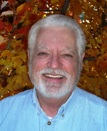
Written by Staff Writer, Victor Claveau
|
| Comments |
The comments are owned by the poster. We are not
responsible for its content.
Jon Cavaiani
Posted on: 2009-02-02 18:49:50
By: djames |
|
Thank you so much for the article about Jon. He is a
class act! I have known him for years through our mutual membership
in the Special Forces Association. He is a good friend and a good
man. I am so glad to see the outpouring of publicity he has been
receiving lately.
de Oppresso Liber!
Dick James
|
|
|
|

